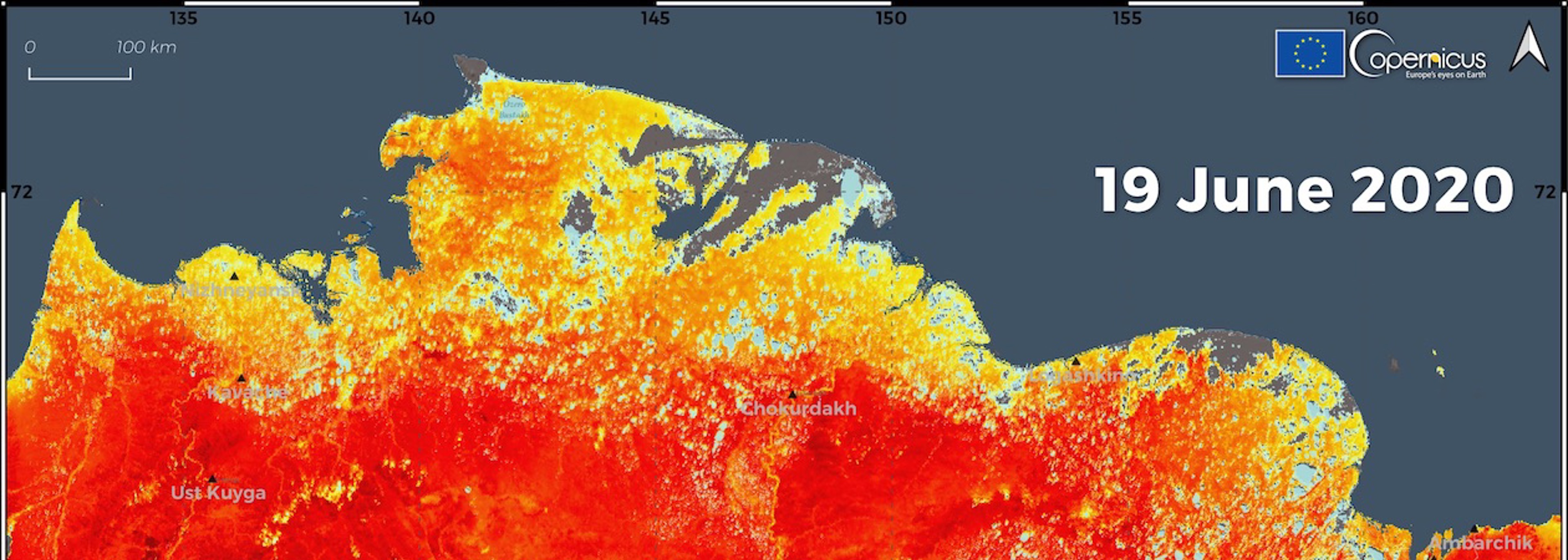Help us create an Environmental Health APPG
Join our campaign by urging your local MP to support the formation of an All-Party Parliamentary Group (APPG) on environmental health.

The EU’s Copernicus programme team tells EHN Extra how it’s watching the Earth change – and not for the better.
Thursday, 1 October 2020, EU Copernicus team
What is Copernicus and what is it used for?
Copernicus is the European Union's Earth Observation Programme, offering information services based on satellite Earth Observation and in situ (non-space) data. It provides reliable information about the past, present and future climate, and supports European adaptation and mitigation policies in various sectors.
What is happening to Arctic surface temperatures?
The Arctic is warming faster than the global average and it is a region with large temperature variations. Seeing notable monthly differences to the long-term average is not unexpected. June 2020 showed a continuation of unusually high temperatures in the northern Siberian region for the month as a whole, with a heatwave during the end of the month bringing very high maximum temperatures to parts of the region. Preliminary data for July show that the month has continued to be warm in this specific region, but some other parts of Siberia have been cooler than average.
What is going on?
Wildfires in the Arctic region in June 2020 have been exceptional and have surpassed the fire activity in terms of intensity and emissions recorded in June 2019. Most of these wildfires were located in Siberia. They have resulted in the highest estimated emissions in the 18 years of the Copernicus Atmosphere Monitoring Service (CAMS) dataset: for June, an estimated total of 59 megatonnes of CO2 were released into the atmosphere, which is more than last year’s June total of 53 megatonnes of CO2.
What is remarkable with these fires in Siberia is the striking similarity with what we saw over the same period of last year in terms of both the area affected and the scale of the fires. Last year was already by far an unusual, and record, summer for fires in the Arctic Circle in our Global Fire Assimilation System dataset, which goes back to 2003.
However, warm temperatures are only part of the story when it comes to wildfires; other conditions that favour wildfires are drier than usual top soil layer and lack of snow, both of which Copernicus has reported on. Warm temperatures and could ultimately lead to increased permafrost melt.
Observations later in the year will provide data on the rate of permafrost thaw in 2020.
What is surface temperature and how is it different from, and related to, climate change?
Temperatures can be measured and estimated in a variety of ways and the different methods may refer to different temperatures.
The Copernicus Climate Change Service uses a method that makes use of all types of Earth observations, including weather stations and satellites, combines it with a computer model, and then makes an estimate for the surface air temperatures, ie the temperature at 2m off the ground. This is equivalent to the type of temperature measured at a weather station or the type of temperature one would hear about in a weather forecast.
When we use surface temperature measurements taken directly from satellites, this temperature is the temperature of the uppermost surface: “the land surface temperature”, ie the temperature the bottom of one’s feet will experience when touching the surface. This is the temperature that is mentioned in this tweet by DG Defis.
For the monitoring of global change and also of temperature change at more local and regional level, we typically refer to the surface air temperature first mentioned. Global average surface air temperatures have increased by around 1C above the pre-industrial era. The last five years have been the warmest on record. We expect both monthly and annual records to be broken at regular intervals as global temperatures continue to warm, and they will continue to be broken if greenhouse gas concentrations continue to increase.
Are heatwaves in the Arctic common? What is different about this?
The Arctic has high levels of inter-annual variability. This means that, to some extent, large temperature anomalies are not unexpected. The length and spatial area of the warmer than average conditions in the Siberian Arctic have persisted throughout winter and spring, which is extremely unusual.
What impact does a heatwave in the Arctic have?
Heatwaves in the Arctic have several consequences including melting snow and ice, which causes more of the sun’s energy to be absorbed, thawing of permafrost and rising sea levels due to melting glaciers. The Arctic is warming at a faster rate than any other area on Earth. Consequences of these high temperatures include impacts to local ecosystems and local infrastructure, and also influence the global climate due to the release of methane from thawing permafrost (methane is 22 times more potent as a greenhouse gas than CO2).
Why are you concerned? How bad is this?
These heatwaves will become more frequent and severe as global temperatures continue to increase due to global greenhouse gas emissions.
Climate change and environmental degradation are indeed an existential threat to Europe and the world. To overcome these challenges, Europe needs a new growth strategy that transforms the Union into a modern, resource-efficient and competitive economy where there are no net emissions of greenhouse gases by 2050. The European Green Deal is our roadmap for achieving this goal.

Help us create an Environmental Health APPG
Join our campaign by urging your local MP to support the formation of an All-Party Parliamentary Group (APPG) on environmental health.